Did you know that efficient landscaping post hole drilling can streamline your entire garden build by slashing installation times by up to 60%? This innovative approach isn’t just about digging holes – it’s the secret to building fences and garden structures that last for decades. Whether you're aiming for a picturesque fence line or want to securely anchor your steel post or mailbox post, expert hole placement is essential. In this article, you’ll discover how advanced hole digger tools and the right techniques can completely transform your outdoor space, boost curb appeal, and add lasting value to your home.
Transform Your Garden: The Impact of Landscaping Post Hole Drilling
Did you know that efficient landscaping post hole drilling can reduce garden installation times by up to 60%? Discover how precision hole placement elevates your landscape's durability and beauty.
-
What You'll Learn:
Why landscaping post hole drilling is crucial for garden projects
The difference professional tools and techniques make
How to choose between augers, hole diggers, and posthole diggers
Cost, efficiency, and safety tips
Answers to common post hole drilling questions
Key benefits of choosing expert landscaping post hole drilling include superior structural integrity, quicker project turnarounds, and long-term savings through reduced repair needs.
"Landscaping post hole drilling is not only about digging holes — it's about laying the foundation for gardens that last generations."

Engaging a skilled professional for landscaping post hole drilling means your fence, deck, or garden border is anchored deep and true—defending against tilting, sagging, and weather damage. Precision matters: a properly drilled post hole ensures each steel post or wooden post stands firm. This foundation underpins not only physical stability but also the beauty and symmetry of your outdoor design. For those considering DIY installations, investing in the right hole digger tools or earth auger options can mean the difference between a stunning result and ongoing headaches.
Besides speed and strength, modern posthole digger technology minimizes soil disruption. This benefits flower beds and newly planted trees or shrubs by protecting delicate root structures. Whether you're lining up a garden fence, building a deck, or framing raised beds, the benefits of attention to detail during landscaping post hole drilling become glaringly obvious for years to come.
Comparing Post Hole Drilling Methods: Which One is Right for Your Landscaping Project?
Comparison Chart | |||
Manual Hole Digger |
Power Planter |
Earth Auger |
|
|---|---|---|---|
Speed |
Slow-Medium |
Fast |
Fastest |
Effort |
High |
Medium |
Low |
Accuracy |
Moderate |
High |
Very High |
Best For |
Small jobs |
Versatile tasks |
Large-scale projects |
Manual Post Hole Diggers vs. Power Planters: Pros and Cons
Manual hole digger: budget-friendly, best for soft soil.
Power planter: versatile for gardens, requires power source.
When considering digging post holes , your choice of tool will greatly impact efficiency and results. Manual posthole diggers remain a popular option for homeowners managing smaller projects or softer soils. Their budget-friendly nature is an undeniable advantage, and because they don’t require external power, they’re ready to go anywhere. However, using a manual digger in tough soil or for numerous post holes can be exhausting and time-consuming, often leading to inconsistent depths or strained backs.
On the flip side, a power planter offers remarkable versatility and a considerable reduction in effort. Powered by a drill, these garden tools handle flower beds, mailbox post installation, and numerous other landscaping tasks with precision. The caveat? You’ll need access to electricity or batteries, and they may require some practice for perfectly straight holes. Nonetheless, if you’re facing a mid-sized garden project, power planters can deliver consistent, speedy results that leave manual options in the dust.
When to Use an Earth Auger or Auger Bit for Digging Post Holes
Earth auger: optimal for rocky or dense soil.
Auger bit: precision drilling for steel post installations or tight spaces.
When your landscape challenges escalate—perhaps you’re dealing with tough soil , compacted clay, or multiple holes for steel posts—consider the earth auger or an auger bit designed for deeper, more precise drilling. Earth augers, either gas-powered or electric, are perfect for efficiently digging post hole in rocky or hard-packed soils, ensuring less operator fatigue and more uniform results. They're the tool for the job in large fencing projects, protecting your back while delivering properly sized holes every time.
Meanwhile, auger bits are particularly beneficial when you need to create holes in confined garden areas or for specialized installations like steel post or tight mailbox post placements. These drill bits can be attached to a powered drill, making short work of soil and saving you hours versus traditional hand tools. Ultimately, both solutions are designed to handle the most demanding environments; however, always ensure you're using the proper diameter bit that matches your post or fencing material.
"Choosing the right post hole tool makes the difference between frustration and flawless results."
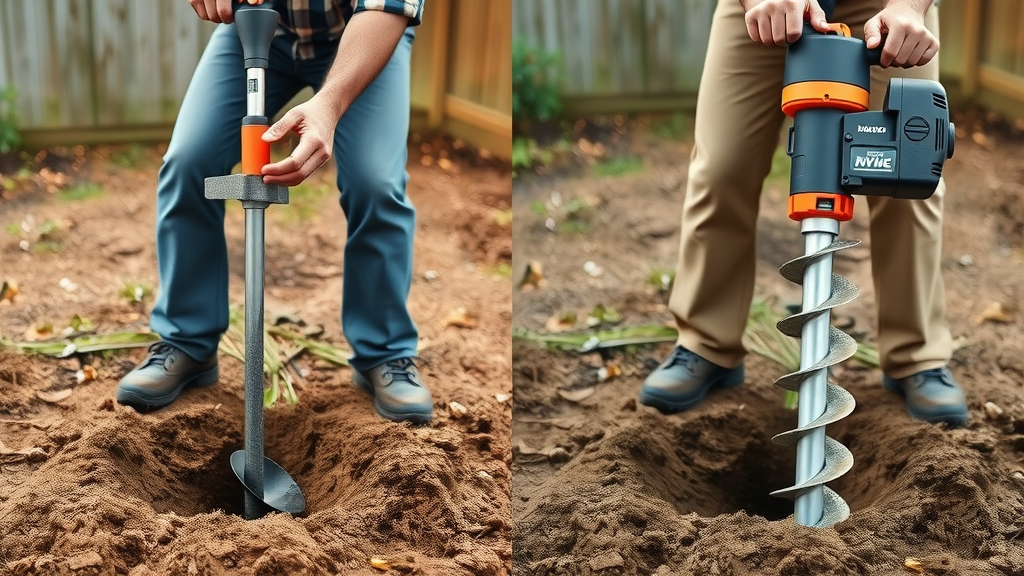
Essential Tools for Landscaping Post Hole Drilling
Posthole digger: Ideal for standard fence jobs.
Hole digger: Specialized for deep or wider holes.
Steel post driving tools: Required for metal fencing.
Popular brands and models for garden tool enthusiasts seeking reliable landscaping post hole drilling results.
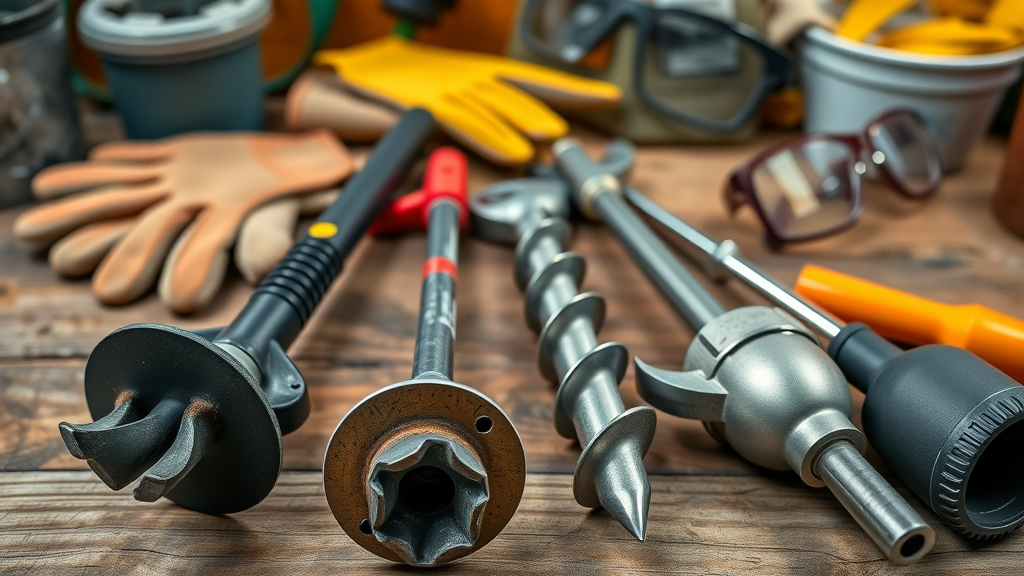
Choosing the right tool for the job is critical when it comes to achieving durable, uniform results in dig post holes . A traditional posthole digger works well for routine fencing jobs, particularly if you're working with loamy or soft soils. For projects needing significantly deeper or wider holes (such as for pergolas or mailbox post posts), a dedicated hole digger or earth auger drill may be necessary.
If you’re installing a metal or steel post fence, be sure to have robust steel post driving tools to guarantee the posts are set below the frost line, ensuring they remain upright through seasonal ground shifts. A clean, well-maintained toolkit that includes sharp auger bits, safety equipment (goggles and gloves), and reliable hand tools will streamline your job and protect you from injury or equipment loss and theft . Investigating reputable brands not only boosts results but often extends tool longevity, giving you strong returns on every dollar spent on garden tool investments.
Step-by-Step Guide to Efficient Landscaping Post Hole Drilling
Demonstration: Watch how to use a power planter and earth auger to drill perfect post holes on our video channel.
Site Planning for Post Holes and Proper Hole Placement
Mark locations, check for underground utilities, and consider fence line straightness.
Success in landscaping post hole drilling always begins with careful site planning. Start by marking the locations of your posts—string and stakes are your friend for ensuring perfectly straight fence or border lines. Before you dig post holes , always call your local utility locating service to check for underground cables, pipes, or irrigation lines, preventing costly and dangerous mistakes.
Once lines are marked, double-check the spacing between planned posts to match your fencing or structure requirements. Proper planning accounts for gate locations, corner posts, and changes in terrain, which can dramatically affect final alignment. Don't rush this step; the more accurate your initial site mapping, the easier the rest of the job will be—even one misplaced hole can mean hours of rework or skewed fence lines.
Drilling Techniques: Achieving Consistent Depth and Width for Digging Post Holes
Best practices for consistent hole depth when using manual or power hole diggers.
For hassle-free post installation , consistency in hole depth and diameter is a must. Whether you’re using a manual posthole digger , auger bit , or a powerful earth auger , establish a reference mark on your tool—such as tape or a paint mark—that matches your required depth (often 1/3 the post length, typically between 2 to 3 feet deep). Keep your tool upright throughout digging holes to maintain straight sides, which are crucial for stability.
Remove any dirt left in the bottom of the hole before setting your posts. For larger projects or tough soil , you might find it easier to work with a powered auger drill, ensuring uniformity across dozens of holes. Remember, the right inch diameter is essential: the hole should be at least three times the width of your post to allow for backfilling or concrete stabilization without crowding the post.
Securing Posts: Concrete, Gravel, and Alternatives
When to use concrete, gravel, or hybrid solutions for anchoring steel post and wood post holes.
Once the post holes are ready, choosing the best method for anchoring depends on the fencing type and soil conditions. Concrete is the industry standard for securing steel post and wooden posts, offering the firmest hold—especially for high-wind or heavy-load areas. To protect from damage , slightly slope the top of the concrete away from the post to divert water.
Gravel is often used for lighter fencing or where free drainage is vital, such as around trees or shrubs—simply tamp gravel at the base and refill in layers as you set each post. In eco-sensitive zones, or if removing concrete is essential, hybrid mixes or even eco-friendly backfill alternatives like crushed stone are available, delivering retention with less environmental impact.
Cost Breakdown: Landscaping Post Hole Drilling Services and DIY Equipment Rental
Service/Tool | |||
Service/Tool |
Average Cost |
Pros |
Cons |
|---|---|---|---|
Professional Service |
$10–$25/hole |
Guaranteed results, liability covered |
Higher upfront investment |
DIY Rental: Hole Digger |
$40–$80/day |
Affordability, flexibility |
Labor-intensive, risk of mistakes |
DIY Rental: Earth Auger |
$60–$120/day |
Fast, less physical effort |
Steeper learning curve |
"Consider your time, budget, and garden size before deciding between DIY and pro landscaping post hole drilling."
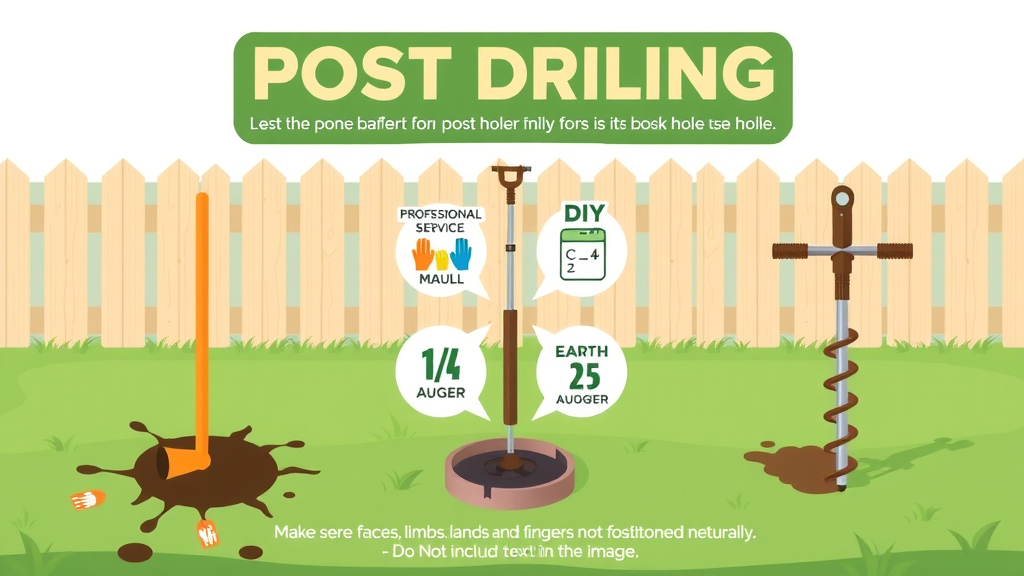
Understanding the cost variables in landscaping post hole drilling can help you make the most informed decision for your project. Professional services command higher upfront costs but offer value in guaranteed accuracy, speed, and freeing your time for other gardening tasks. These experts arrive with high-grade hole diggers and advanced auger drills, and their work is backed by insurance and liability protection.
For DIYers aiming to save on labor , renting a hole digger tool or earth auger is the next best choice. Keep in mind that the lower daily rate is offset by the effort required, possible learning curve, and risk of misaligned post holes . Larger properties, tough soils, or complex layouts may quickly erode these savings—potentially leading to costly realignments or post replacements. Always balance the size and scale of your garden transformation with available time, skillset, and resources.
Maximizing Results: Tips and Best Practices for Flawless Landscaping Post Hole Drilling
Always check local codes before digging post hole projects.
Maintain sharp auger bits and lubricate moving parts of your tools.
Avoid over-digging to minimize soil disruption.
Drainage and backfilling tips for stable post installation.
For truly flawless landscaping post hole drilling results, every detail matters. Always check local codes before you dig; municipal requirements dictate not just post depth but setbacks and allowed materials. Using dull auger bits or poorly maintained tools leads to uneven holes and unnecessary strain, so sharpen and lubricate your equipment before starting any project.
Avoid making your hole too deep or too wide—excess digging increases soil instability and makes it harder for posts to stay plumb. If installing in a waterlogged or slow-draining area, add several inches of gravel or crushed stone at the base of your post hole to encourage drainage and prevent rotting. When backfilling , tamp soil or concrete in layers to remove air pockets and lock your posts in tight. Careful execution of these steps builds structures that last and minimizes future headaches for repairs and adjustments.
Reviews and Testimonials: Trusted Landscaping Post Hole Drilling Solutions
"Our garden fence project finished a week early thanks to professional landscaping post hole drilling services!"
Customer testimonials highlighting speed, accuracy, and satisfaction.
Common themes: reliability of earth auger tools, ease of power planter systems, expert hole digger recommendations.

Homeowners seeking to install a fence or establish garden borders consistently report better-than-expected results after hiring professional landscaping post hole drilling services. Reviews frequently mention the speed and precision achieved with commercial-grade earth auger and power planter tools—what might have taken weekends by hand is finished in a single afternoon.
Many users also highlight the peace of mind that comes with professional recommendations for the right hole digger or anchoring solutions, particularly when dealing with complex environments or large yard projects. These testimonials prove that investing in specialized help or high-quality tools for digging post holes pays off both in short-term convenience and in long-term landscape durability.
Product Showcase: Recommended Tools for Landscaping Post Hole Drilling
Top-rated manual posthole digger for closely spaced post holes.
Best power auger for garden tool enthusiasts requiring deep or wide drilling.
Innovative steel post driving tools for heavy-duty fencing.
Comparison of popular hole diggers for various soil types and garden projects.
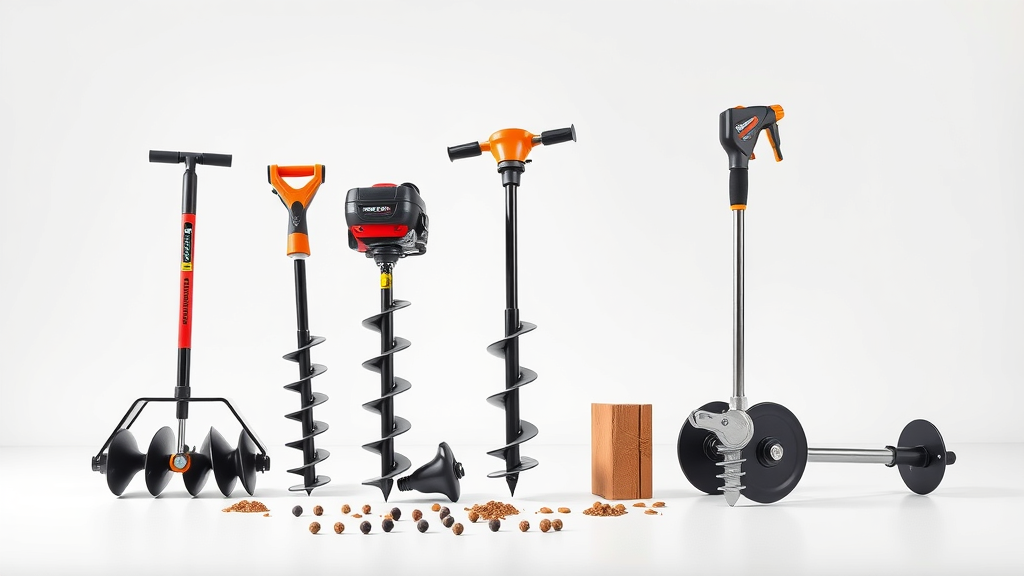
Today’s best landscaping post hole drilling products offer something for every garden scenario. The classic manual posthole digger remains unmatched for precise, closely spaced installations—ideal for picket fences or compact gardens. For expansive landscapes, the best power auger models combine raw power with ergonomic design, allowing you to tackle even deep hole or wide digging tasks with minimal fatigue.
Some of the latest steel post driving tools revolutionize the way metal fences are installed, delivering consistent stability and depth in a fraction of the time. Before you buy, consider how product features (power type, handle length, available auger bit sizes) align with your needs, the soil type in your garden, and anticipated project frequency. Opt for proven brands known in the professional community to reduce chances of tool failure or inconsistent hole quality.
Safety Tips When Using Tools for Landscaping Post Hole Drilling
Wear protective gear: gloves, goggles, and steel-toe boots.
Check for underground lines before operating earth auger or digging post hole.
Use two-person teams for heavy power auger jobs.
Safety must never take a backseat during any landscaping post hole drilling operation. Always start by donning the basic gear: heavy-duty gloves to protect from blisters or pinches, protective goggles to guard your eyes from flying soil or debris, and steel-toe boots for impact defense. When using a powered auger drill , keep your stance firm and avoid loose clothing that could catch in moving parts.
Before the first hole is started, check for underground lines and pipes—doing so prevents not just costly damage but averts serious risk of injury. For deeper or denser soil, enlist a partner when managing a heavy earth auger or steel post driver. Never rush; respect the machinery, and focus on correct posture to avoid straining your back .
People Also Ask: Landscaping Post Hole Drilling
What is the best method for digging post holes?
The most effective method for landscaping post hole drilling depends on soil conditions: use an earth auger for rocky soil, a power planter for versatile garden work, or a manual hole digger for small-scale jobs.
For digging post holes , always match your tool to the ground's demands. A manual hole digger suffices in soft sand or loose soils, but for anything tougher, a power planter or commercial earth auger will guarantee better results with less effort and more consistency.
Is a 6 inch auger big enough for 4x4 post?
A 6-inch auger creates a hole that's typically just large enough for a 4x4 post, but for stronger support and easier adjustment, consider using an 8-inch auger for landscaping post hole drilling .
While a 6-inch auger will technically fit most standard 4x4 posts, using an 8-inch auger provides space for adjustments, better backfilling, and a more stable result—especially important for fence posts or heavy-duty garden structures.
Are post hole diggers worth it?
Yes. Investing in a quality post hole digger or renting a reliable hole digger can save significant labor and ensure consistent results with landscaping post hole drilling .
A good posthole digger not only spares your back but guarantees aligned, deep, and uniform holes—making later stages of your garden project far easier and extending the durability of your structure.
Is renting an auger worth it?
If you have a large number of post holes or tough soil to drill, renting an earth auger is often worth the cost and will speed up your landscaping post hole drilling considerably.
For big projects or where digging conditions are tough, a rented earth auger will quickly pay for itself in time saved and better results compared to manual tools.
Frequently Asked Questions About Landscaping Post Hole Drilling
How deep should I dig post holes for garden fencing?
Can I dig post holes in clay or rocky soil?
What equipment is best for steel post installation?
Are there eco-friendly options for securing posts?
Most fence post holes should be at least one-third as deep as the post is tall—so for a 6-foot fence, aim for 2 feet deep. In clay or rocky soils, use an earth auger or powered auger bit, sometimes supplementing with a digging bar. Steel post installations demand a post driver or heavy-duty auger to achieve the required depth. For eco-friendly anchoring, consider gravel or specialized recycled material mixes instead of concrete.
Checklist: Preparing Your Garden for Landscaping Post Hole Drilling
Confirm fence or post line layout
Mark utilities
Gather safety gear and all garden tool equipment
Plan post spacing and depth to match landscaping needs
Preparation is key to a smooth landscaping post hole drilling project. Always check your planned layout, ensure you have necessary permissions, mark all posts and utilities, gather your safety and digger tools, and finalize your post plan before making the first dig.
Making the Right Choice: Professional vs DIY Landscaping Post Hole Drilling
When to hire experts for large, complex, or high-visibility garden projects
Cost/benefit analysis of renting augers and hole diggers versus professional service
For smaller or straightforward backyard jobs, a skilled homeowner with the right hole digger can achieve great results. However, when tackling large properties, irregular terrain, or valuable garden spaces, hiring professional landscaping post hole drilling services often delivers long-term value by avoiding costly mistakes and ensuring lasting stability. The peace of mind and warranty provided frequently offset higher initial costs.
Compare costs, effort, and your personal experience level. Take on small projects yourself, but trust major builds or complicated sites to experts for guaranteed success.
Summary: Land Your Dream Landscape with Expert Landscaping Post Hole Drilling
Landscaping post hole drilling sets the stage for beautiful, lasting gardens.
Invest in the right tools or services for your needs and enjoy stress-free, durable results.
Every great garden starts with strong foundations—by using proper landscaping post hole drilling methods, tools, and expertise, your outdoor dreams can truly flourish.
Take the Next Step: Get Professional Landscaping Post Hole Drilling Help Now
Request a Free Quote at: https://aestheticfencingca.com/quote-request or Call us at 916-475-6338
Ensure your garden transformation starts with the best: choose precision, reliability, and expertise for flawless landscaping post hole drilling.
Ready for flawless results? Transform your landscape with expert landscaping post hole drilling — request your quote or call today!

 Add Row
Add Row  Add
Add 

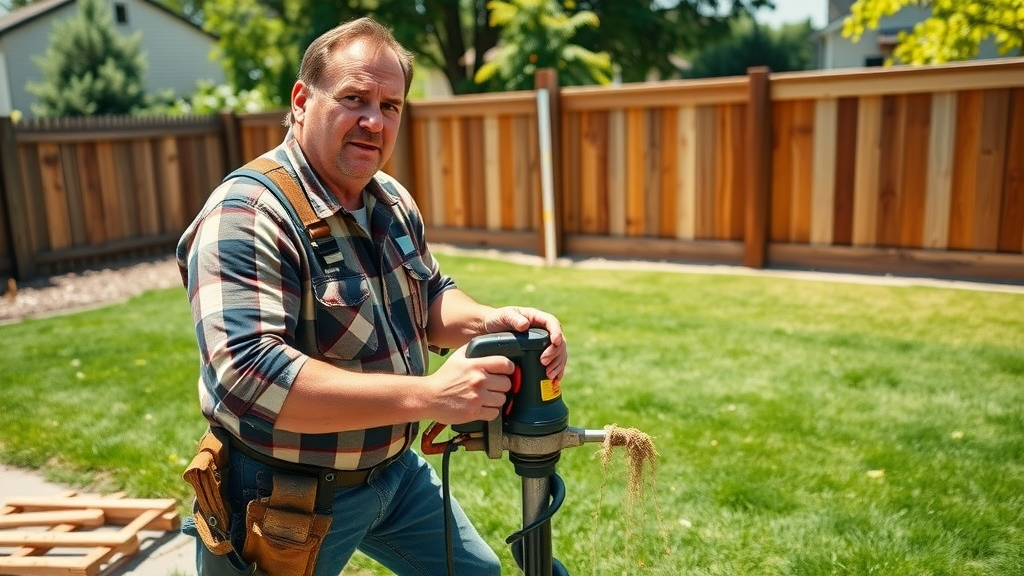

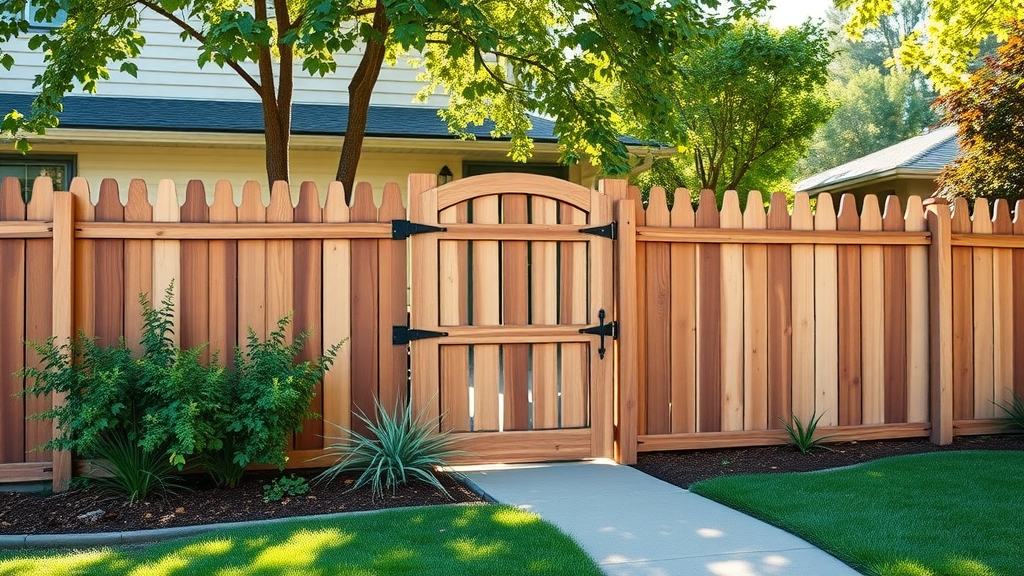
Write A Comment